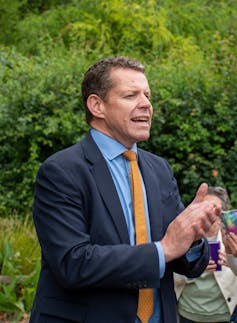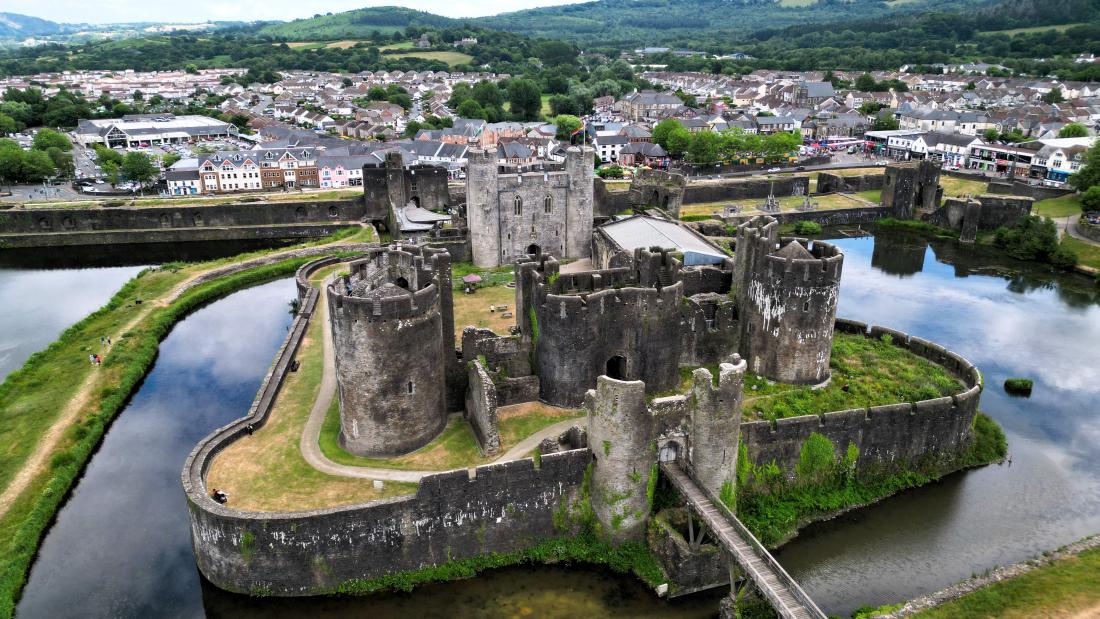When voters in Caerphilly in south Wales go to the polls later this month, it will be about far more than one seat in the Senedd, Wales’s devolved parliament.
Caerphilly, a postindustrial town just north of Cardiff, has long been considered safe Labour territory. But in recent years, economic upheaval and social change have made once rock-solid seats like these far less predictable.
The contest is therefore not just about who wins a single seat, but what kind of Wales will emerge from a period of upheaval. Will it be one clinging to the certainties of its industrial past? Or one looking toward Plaid Cymru and the prospect of Welsh independence as the political voice for such unease? Or, alternatively, will it turn to the populist right?
What happens here could indicate whether Labour’s hold on the Welsh valleys is starting to loosen, and whether new political forces are taking root. It’s a local contest with national stakes.
Labour remains Wales’s dominant political force, but the past 18 months have been turbulent. Mark Drakeford’s retirement as first minister was followed by Vaughan Gething’s brief and troubled leadership.
Meanwhile, the current first minister Eluned Morgan faces her own challenges. Fourteen members of the Labour group will step down before the 2026 Senedd election.
The Caerphilly byelection, triggered by the death of sitting Labour member Hefin David, comes at a difficult time for Labour across both the UK and in Wales.
Labour’s UK leadership remains focused on Westminster, while in Wales, divisions over candidate selection and policy have occasionally exposed cracks in the party’s valleys strongholds. History offers warnings.
For example, in 2005, Labour suffered a shock defeat in nearby Blaenau Gwent when former Labour member Peter Law stood as an independent after rebelling against the party’s candidate selection. His victory – and the byelection wins that followed his death – showed how local discontent can upend even the safest seats.
Whatever happens in Caerphilly, the real test for Labour will be what follows, as the result may affect its majority to govern and pass a budget. It could remain in office as the largest party, but without power.
The rise of Reform
Among the most striking developments in Welsh politics is the growing profile of Reform UK, now rebranding its Welsh operation as “Reform UK Wales”.
Analyses point to similarities with the Brexit Party and UKIP. Like these parties before, Reform taps into the undercurrent of discontent that runs through many post-industrial communities.
While some research suggests Reform may be perceived as even more racially divisive than its predecessors.
In Caerphilly, Reform has an active local campaign and a simple message: bring back money and decision-making to local communities. The party is positioning itself against both the Welsh government’s record in the Senedd while channelling resentment toward Westminster.
For some voters, Reform’s appeal is less about specific policies than about mood – frustration with established politics and a desire for something new.
Under changes due next year, the Senedd will grow in size and adopt a more proportional voting system. That could make it easier for smaller parties like Reform to win representation, giving this byelection added importance as a test of their strength.
A strong showing could signal a profound realignment in the political geography of Wales, and a measure of how far populist politics has embedded itself in areas once considered the bedrock of Labour Wales.
Stepping stone to a Plaid government?
Plaid Cymru, meanwhile, is keen to show it can turn rising national support into real gains.
The party has come close to winning Caerphilly before. In 1968, its candidate Phil Williams cut Labour’s majority from more than 20,000 to fewer than 2,000 votes.
More recently, former Plaid leader Leanne Wood’s surprise victory in nearby Rhondda in 2016 showed Plaid could break through in Labour heartlands. But her loss five years later underlined how hard it is to sustain momentum.

Polling suggests Plaid could form a government in 2026 if current trends continue, but that depends on building a consistent base in areas like Caerphilly. A victory here would not just be symbolic; it would demonstrate that Plaid’s message resonates beyond its rural and Welsh-speaking heartlands.
The upcoming electoral reforms could further boost Plaid’s chances, if it can show voters that it offers a credible alternative to Labour.
For other parties, expectations are modest. The Conservatives are struggling to make headway in Wales, while the Liberal Democrats remain on the margins. But the Caerphilly byelection will still send a message far beyond this one constituency.
Whatever the result, Caerphilly will offer a snapshot of a nation in transition. A comfortable Labour win would suggest its dominance in the valleys remains intact. A strong showing for Plaid or Reform, however, would point to deeper realignments. It’s evidence that Wales’s political future may look very different from its past.![]()

